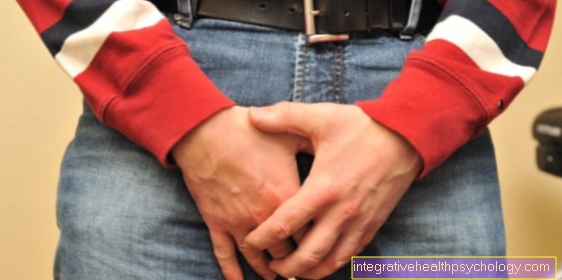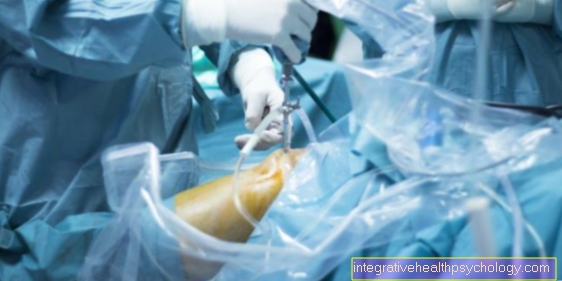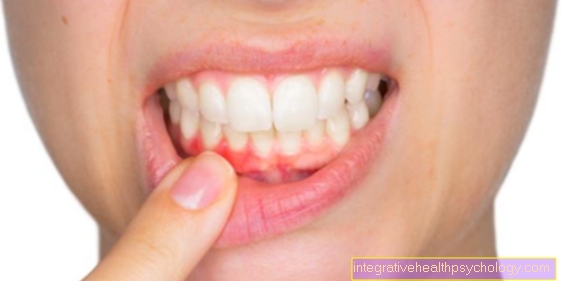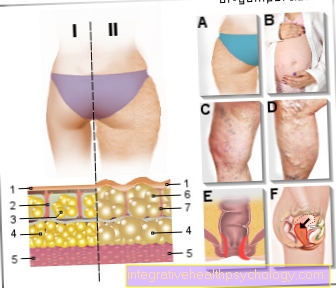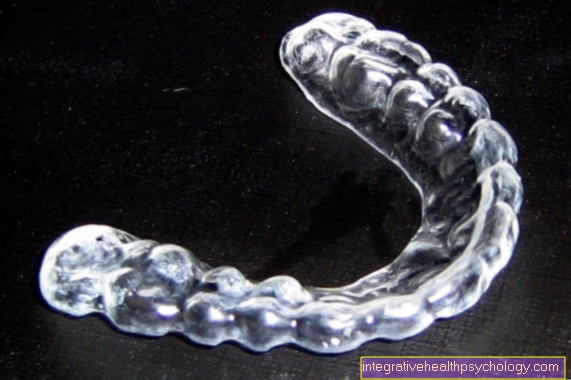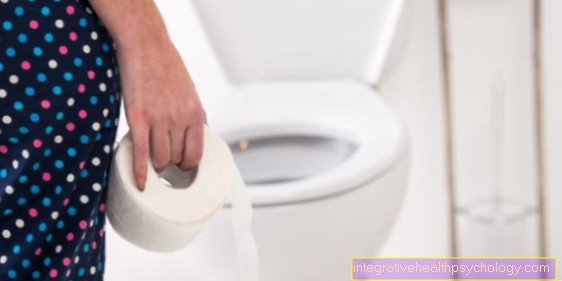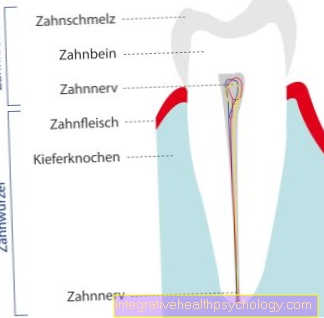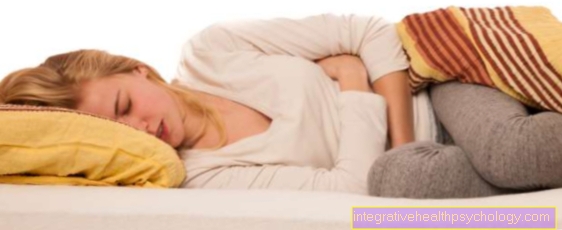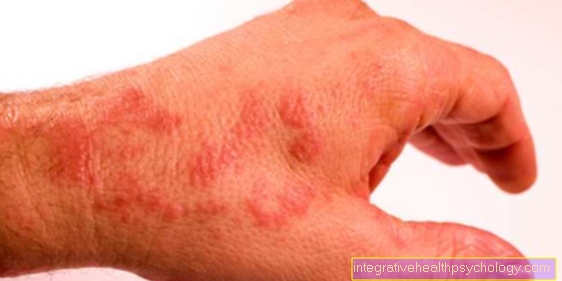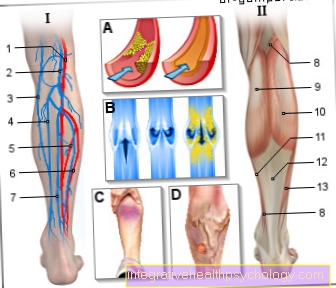The birth control pill
Synonyms in the broader sense
Birth control pill, mini pill, macro pill, micro pill, contraception
definition
The pill is the most popular hormonal contraceptive. The birth control pill was first introduced in the US in 1960 and in Europe in 1961 and has been one of the most widely used contraceptives ever since.
As a hormonal active ingredient, the pill contains the hormones estrogen and Progestin. The hormonal components of the pill, which were still in high doses in the past, have been reduced more and more up to the present day. Thus, with doses that are just high enough to ensure a safe effect of the pill, the side effects are greatly reduced and the pill can be used well as a contraceptive even in adolescents.
Do you want basic information about your options for contraception? You can find them all with us
- Overview of contraception methods
How does the pill work?

The principle of action of the pill is that Ovulation (ovulation) to prevent. The regular intake of the pill leads to a continuous level of the in the body Sex hormones (Estrogens and progestins).
This continuous level of sex hormones suppresses the release (secretion) of FSH (follicle stimulating hormone) and LH (luteinizing hormone).
FSH and LH will be in the Pituitary gland (Pituitary gland), regulate the release (secretion) of estrogens and gestagens in a natural cycle and are no longer released into the blood if the concentration of sex hormones is high enough.
By taking the sex hormones using the birth control pill, the body is suggested that there are enough estrogens and gestagens in the organism and that no more are needed, so that FSH and LH are no longer released into the blood.
Ovulation cannot be triggered because the so-called LH peak present in a natural cycle is missing. An LH peak occurs in a natural cycle shortly before ovulation, when the concentration of LH in the blood increases rapidly and then decreases again just as rapidly. When taking the pill, however, LH is almost constant throughout the cycle, so no egg can jump. The consequence of not ovulating is that no mature egg is available for fertilization. So the pregnancy does not happen.
But the pill also has other effects that make pregnancy difficult. The secretion of the cervix (cervical secretion) becomes ’viscous during the entire cycle and thus more difficult for the sperm to penetrate (penetrate).
In addition, the correct structure of the mucous membrane of the uterus is prevented (inhibition of the proliferation of the endometrium), making it more difficult for an egg to implant properly.
In addition, the movement of the fallopian tube (tube motility) is changed in such a way that the sperm are transported in the direction of the uterus and not in the direction of the fallopian tube (tuba uterina), in which a mature egg cell may be present and can be fertilized .
Also find out about possible hormone-free alternatives such as: The GyneFix® copper chain
What are the different types of pills?

The pill is available in different forms. On the one hand, there are so-called single-phase preparations. The same amount of estrogens and gestagens is present in each tablet. A contraceptive pill that contains over 0.036 mg of the estrogen ethinylestradiol is called a macropill, and one with an ethinylestradiol content below this value is called a micropill.
On the other hand, there are one- and two-phase preparations. With the two-phase preparations, the first seven tablets for the first seven days of intake contain tablets with only estrogens. From the eighth day onwards, tablets containing an estrogen-progestin mixture are taken.
In addition to the macro and micro pills, there is also the mini pill. The special thing about the mini pill is that it only contains progestins.
Read more about this: Mini pill.
The pill is also available in the form of step-by-step preparations. With step-by-step preparations one pursues the goal of taking a smaller amount of mainly progestins but also total oestrogens. In the case of two-stage preparations, the progestin content is reduced in the first 11 tablets. From the 12th tablet onwards, the remaining tablets have a higher progestin content. In the case of three-stage preparations, the progestogen content increases in the 6th tablet, the estrogen content in the 9th tablet and again the progestogen content of the remaining tablets in the 12th tablet.
Cerazette is also a contraceptive method in tablet form. You should also deal with this promising form of contraception before you decide on a variant. For the most important information, read: Cerazette - the most important information at a glance
How is the pill taken?
The pill is in one Box of 21, 22 or 28 tablets available.
When you start taking the pill, you start with the first tablet of a pack on the first day of your menstrual bleeding. One tablet is then taken on each following day up to the 21st or 22nd day. This is followed by a break of seven or six days in which no tablets are taken. Then you start taking the first tablet of a new pack again.
In the 28-tablet pack one tablet is taken every day. If the 28 tablets in a pack are completely used up after 28 days, you can start taking the first one straight away without a break tablet a new pack.
In the 28-tablet pack, the last 8 tablets are placebo, so that overall there is only one hormone intake for the first 22 days.
During the intake-free period there is usually a withdrawal bleeding similar to menstrual bleeding, since the body is deprived of sex hormones during this time.
In addition to the macro and micro pills, there is also the mini pill. The special thing about the Minipill is that they are exclusively progestin contains.
The progestin-containing tablets must be taken on all 28 days of the cycle. There is consequently no tablet-free days.
It is also important when taking the minipill that it is always exactly at the same time must be taken, otherwise it will not work safely.
It may be taken with a maximum time difference of two hours. The effect of the minipill is similar to that of the macro or micro pill, but is only triggered by one sex hormone (progestin).
The LH and FSH release is suppressed with the minipill as well as with the macro- or micro-pill. However, ovulation is only prevented in about 45% of women. There is also a disruption of egg cell maturation (follicle maturation), an inhibition of the growth of the uterine lining and the prevention of the implantation of an egg (proliferation and nidation inhibition of the endometrium), a thickening of the cervical mucus (cervical mucus) and a change in the mobility of the fallopian tubes (Tubae uterinae).
The mini pill was made for High-risk patients developed. The estrogen-related side effects therefore do not occur in these patients.
The minipill therefore does not increase your existing risk factors, such as the Risk of thrombosis and is a good and safe contraceptive for the corresponding risk patients.
How safe is the pill?
Reliable contraception if the pill is taken correctly, regardless of its type, is available every 28 days, including during the withdrawal bleeding.
The macro and micro pills have a Pearl Index of around 0.1, the mini pill one of around 0.2 - 2.
It should be noted that the effect of the pill can be influenced in the event of diarrhea, vomiting and the use of various medications, which means that reliable contraceptive protection may no longer be guaranteed.
Pearl Index
The Pearl Index shows how many out of 100 women got pregnant using a single specific method of contraception in a specific period of time. A Pearl Index of 5, for example, means that 5 out of 100 women became pregnant using a certain method of contraception. The bigger is the numerical value of the Pearl Index, the more unsafe is the contraceptive.
So the security is very high. Most of the time, an unwanted pregnancy is the result of one Ingestion errors, like forgetting to take a tablet.
But also Diarrhea or vomiting a few hours after taking the pill, the effect of the pill is no longer guaranteed.
Likewise, decreases the intake of Antibiotics the reliability of the pill. Thus, in the event of errors in taking, taking antibiotics and diarrhea or vomiting after taking the pills immediately, another contraceptive should be used. The started pill pack should always be taken to the end.
Side effect of the pill
Even if the birth control pill has many advantages over other contraceptives, one should nonetheless not ignore the side effects of the pill.
For example, taking the pill increases the risk of thrombosis, has a slightly diabetogenic effect (leads to slight insulin resistance; diabetes mellitus) and can cause benign tumors of the liver (focal, nodular hyperplasia and liver cell adenomas).
Furthermore, taking pills promotes the development of hormone-dependent breast tumors (breast cancer).
It can also lead to cycle irregularities, mood swings, nervousness and weight gain.
You can find more information on the individual risks under our topics:
- Thrombosis (see: thrombosis while taking the pill)
- Diabetes mellitus
- Breast cancer
- Abdominal pain from pill
Read more on the subject at: Side effects of the pill and depression from the pill? - Is there something to it?
Who is not allowed to take the pill?

The pill may of course only be prescribed to women who have no contraindications.
Possible factors that prevent a woman from taking a pill are, for example
- a increased risk of thrombosis
- previous heart attack
- Stroke (apoplexy)
- or one embolism
- existing Liver cell tumors
- high blood pressure (arterial hypertension)
- or an existing one Pregnancy.
There are many more contraindications that the attending physician for the existing desire to take pills Gynecology / gynecology should be strictly excluded when prescribing the pill.
When can the pill be prescribed?
If the pill is prescribed to adolescents under 14 years of age, the gynecologist cannot prescribe the pill without the consent of a parent, otherwise he will be liable to prosecution.
In principle, young people between the ages of 14 and 16 no longer need parental consent. However, many doctors want to cover themselves so they often seek parental consent.
From the age of 14, however, the doctor is bound by his medical confidentiality and should also observe it.
What happens if you stop taking the pill?

The pill is a contraceptive and contains various hormones that help prevent pregnancy.
If a pregnancy is desired, the pill can also be discontinued.
The last started packet should be taken to the end.
If you stop taking the pill, then stop taking the pill every day, unprotected sexual intercourse can lead to pregnancy.
However, the body has often got used to the additional hormone supply from the pill.
Therefore, your period may start irregularly, and in some cases not at all.
If you have been bleeding for more than 2 months and you are not pregnant either, the hormonal effects of the pill may simply last too long.
Here you can use another hormone preparation, which you only have to take once, the period "in swing"And thus wean the body quickly from the pill.
However, the pill does not only affect a woman's menstrual period. Many pill preparations also contain active ingredients that ensure a cleaner complexion, especially in younger women, and help prevent pimples.
If you want to stop taking the pill, you have to be aware that the positive side effect of clearer skin is now gone.
The pill also has a certain effect on the psyche.
Many women complain that they have become more depressed or unbalanced after taking the pill.
If you stop taking the pill, your feelings can improve within a few days and many women have the feeling that they are suddenly much happier.
In some women there is also an increased libido, i.e. an increased desire for sexual intercourse.
This is probably due to the fact that the body knows from the new hormone composition that it is now possible for it to become pregnant.
This increases the woman's desire for sexual intercourse.
It is important to note, however, that after stopping the pill, the body still needs a long time to find its old rhythm again.
Since the hormone composition in the pill always clearly regulated when bleeding would occur and when it would not, women are used to their 21-day rhythm.
However, the body does not function according to a set of rules and so it can sometimes take a little longer before bleeding occurs and there can also be increased interstitial bleeding or spotting.
If these problems persist for more than four months, you should go to the gynecologist to fix the problems.
Read more on this topic at: What happens if you stop taking the pill?


